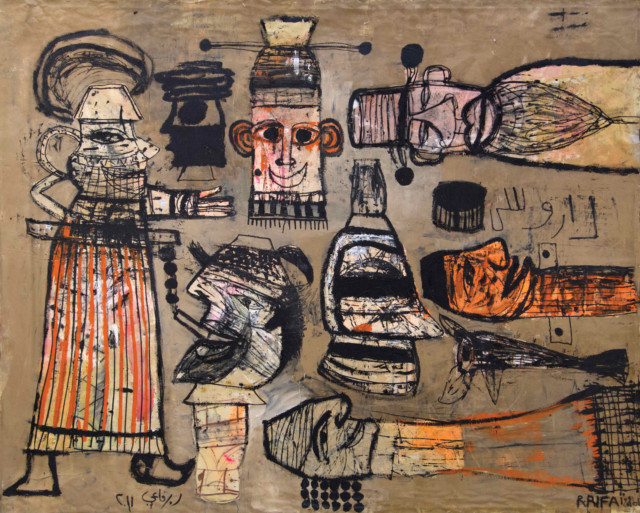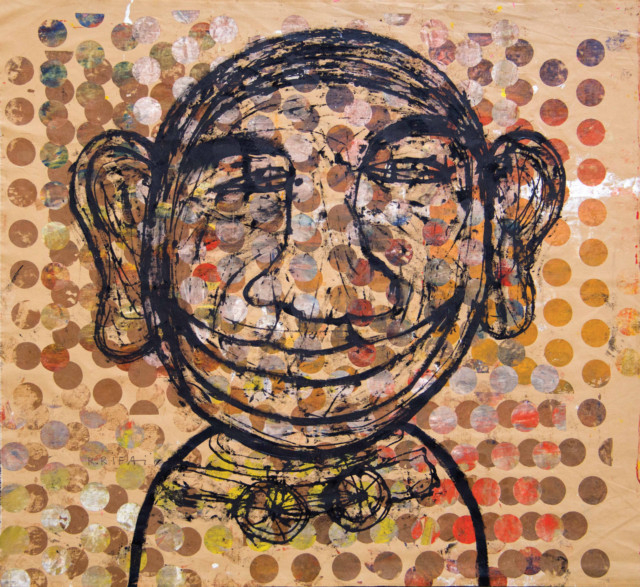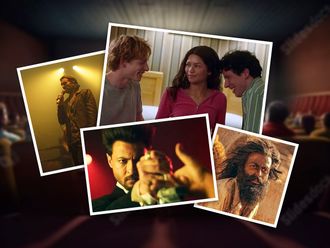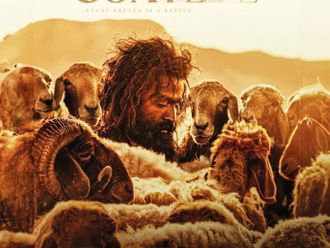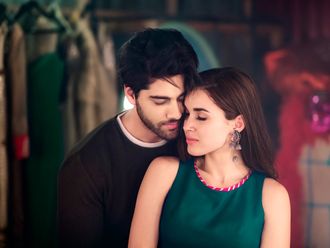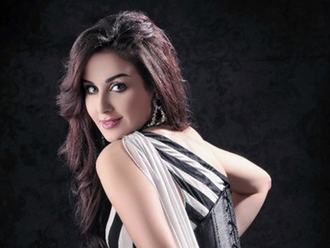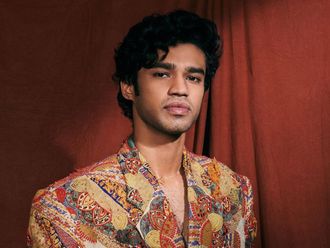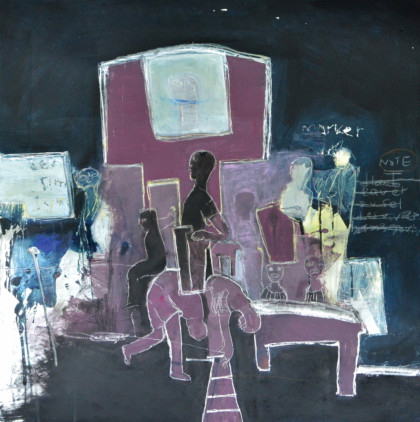
“Crossings – An African Arabian Dialogue” is the first in a series of three exhibitions organised by Mojo gallery with the aim of exploring the influence of African art on the global language of contemporary art, and facilitating a dialogue between artists from Africa, Arabia and Europe. The show, curated by Egyptian artist and curator Mohammad Abu Al Naga, brings together the work of Beirut-based Lebanese artist Raouf Rifai and Cameroonian artist Joel Mpah Dooh, who lives in Douala. “The intersection between these two bodies of work is a unique opportunity to renew our participation in an Arab-African dialogue and explore the role of contemporary art in bridging diverse cultures in an increasingly globalised world,” Al Naga says.
The work of both artists is rooted in their heritage and milieu, but their themes are universal. A striking feature of Rifai’s acrylic-on-canvas paintings is the influence of African art in the look of his figures, the simplicity of his compositions and his use of symbolism. The main character in his paintings is the “Darwish”, who represents the common man. Through this simple, ordinary person, the artist observes humanity and comments on Middle Eastern culture, heritage and the present sociopolitical reality.
Rifai’s Darwish appears in diverse situations, expressing different emotions and attitudes. “Darwish Kalashnikov Beirut” references the ongoing conflict in Lebanon, the Arab Spring and the Kalashnikov rifle that has become an unfortunate icon in the Arab world. And “Da Darwish” is a humorous comment on the Russian influence in the Middle East, and on “yes men” (Da is Russian for yes), who support autocratic rulers for their selfish reasons, while pretending to serve the common man.
The artist sometimes depicts the Darwish as a woman to highlight the repression of women in oriental society. And he comments on misguided notions of male “honour” in Middle Eastern society through a Darwish with a huge moustache. In one particularly African-inspired composition, Rifai has painted several Darwishes representing different civilisations such as the Pharonic, Babylonian, Sumerian and Pheonician, thus connecting different cultures, and the past with the present.
In “Portrait of Sufi Darwish”, he reflects on the spiritual aspect of life. And he expresses his hope for a better future in a painting of a serene, smiling Darwish against a background of tiny circles. “The circles symbolise the cosmos, and this painting is about the harmony between human beings and the universe,” Rifai says.
Dooh’s artworks are created by painting and engraving on aluminium sheets. His work reflects what is happening around him, but is essentially an exploration of the fragility of human identity, and of how it is influenced by society, institutions and relationships. “We shape and are shaped by our environment,” he says.
Many of his compositions depict life on the streets around his home in Douala. He captures the buzz and festive atmosphere at night when people come out to eat, drink and listen to music at roadside restaurants. But he also depicts the plight of the homeless wandering on the streets, not only in Douala, but in most cities around the world.
Dooh expresses his concern about the impact of our modern way of life on the environment in “Strange Fruits”; and comments on the economic and sociopolitical conditions that force people to immigrate despite the risks involved. His painting, “An Afternoon in Tripoli”, offers a beautiful link with Rifai’s work. Here the artist has expressed his feelings about the bloodshed in Tripoli, in northern Lebanon, by almost ripping apart the aluminium panel on which it is painted. “This is about my memories of the peaceful streets of Tripoli and all the unfortunate things that are happening there now,” he says.
Jyoti Kalsi is an arts enthusiast based in Dubai.
“Crossings – An African Arabian Dialogue” will run at Mojo gallery until February 13.
Box: Tribute to Czech women
Leading fashion photographer Hikmat Wehbi’s debut exhibition in the region, “Czech.The Women” features a series of photographs taken in Prague. “Women have always been my inspiration. As a fashion photographer I am constantly photographing beautiful women. But in these pictures I have focused on capturing the inner beauty and strength of character of my subjects, and portraying their true feelings. With its amazing architecture and history, Prague is one of the most beautiful cities that I have ever visited. And I truly believe that Czech women are the most beautiful women in the world. This show is a tribute to the soul and essence of the Czech woman,” he says.
“Czech.The Women” will run at The Empty Quarter, DIFC, from January 27 to January 30.
Box: Children of Gaza
With the support of Save the Children, an international charity, award-winning international photographers Anthony Dawton, Jim McFarlane and Guiseppe Aquili spent two weeks in Gaza in 2009. They photographed the victims of the Israeli incursion of December 7, 2008. Their images speak about the destruction, and the physical and psychological damage caused by this conflict. But the pictures of the children also show how bright, intelligent and full of hope they are.
A set of 21 black-and-white photographic artworks, each 1.5 by 1 metre in size, selected from these images will be on display in Dubai at a special exhibition titled “Children of Gaza”. The show will include 18 colourful digital artworks by renowned artist Dia Al Azzawi that are inspired by the photographic images.
The exhibition highlights the terrible consequences of such conflicts, and explores the use of art to help resolve seemingly intractable political conflict. Proceeds from the show will support Save the Children’s project in Gaza in partnership with the Salam ya Seghar Fund, which has provided health care, nutrition and better opportunities to thousands of children.
“Children of Gaza” will run at Meem Gallery from January 27 to February 6.


